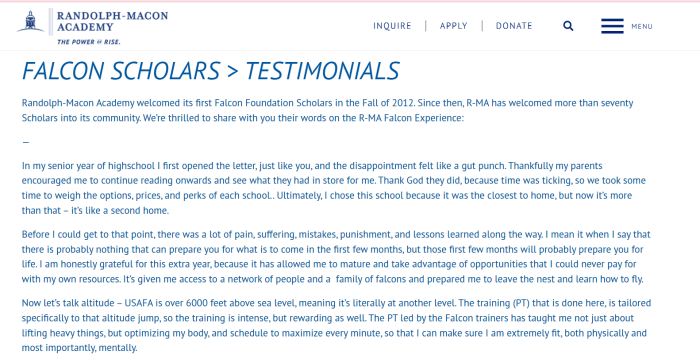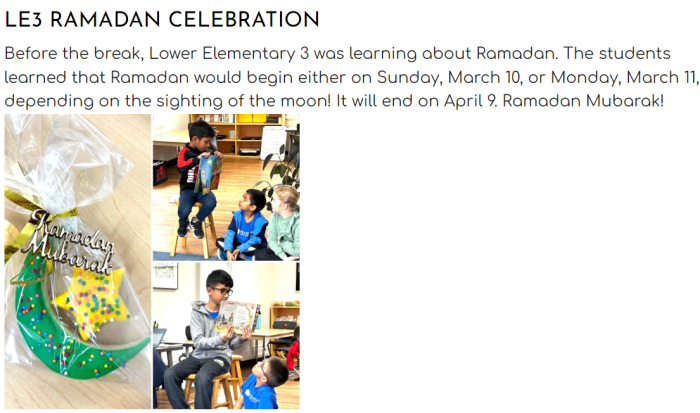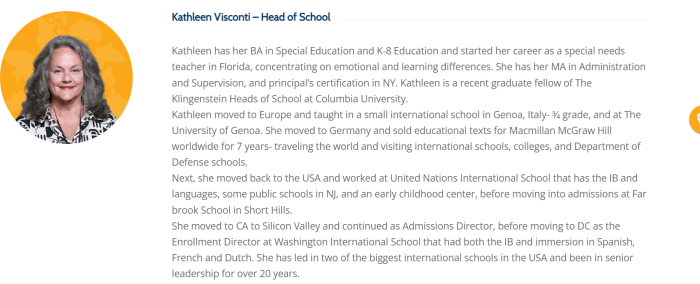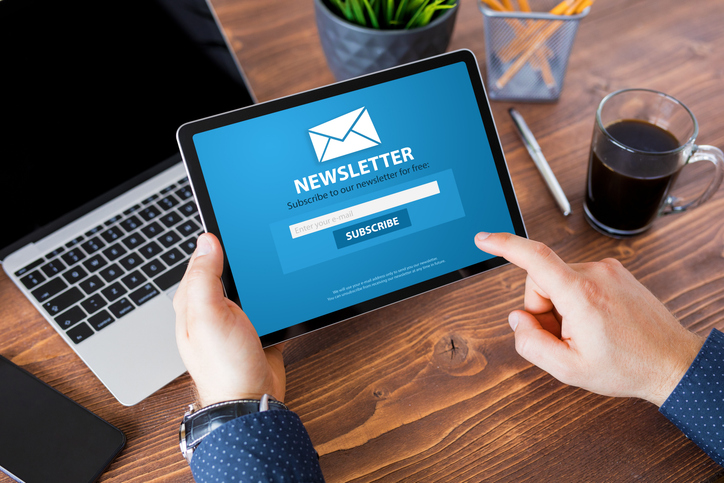Newsletters have long been a staple in school communication, bridging students, parents, and educators. If you’re unfamiliar with this marketing channel, what is a school newsletter? A school newsletter is a publication created by schools to communicate important information, updates, and events to students, parents, and staff. However, with the advent of digital media and evolving communication preferences, traditional newsletter formats may no longer suffice.
Today, newsletters’ role has expanded beyond the dissemination of information. They have become a platform for storytelling, celebrating achievements, and promoting a positive school culture. A well-crafted newsletter can captivate its audience, encourage participation, and spark interest in joining your school. With this in mind, we must rethink our approach to school newsletters, ensuring they are informative, engaging, and reflective of our vibrant school communities. Today, we will explore creative school newsletter ideas to breathe new life into your newsletters.
In this blog, we’ll explore innovative and unique school newsletter ideas that cater to the diverse needs of K-12 schools. By embracing creativity and leveraging technology, we can enhance engagement, foster a sense of community, keep all stakeholders informed and connected, and potentially increase enrolment. From interactive digital formats to themed content that resonates with students, we will cover strategies to enhance your school’s communication efforts. Whether you want to revamp your existing newsletter or or view some high school newsletter examples to help you start from scratch, these unique ideas will provide the inspiration and guidance needed to create something that truly stands out.
1. Make Your Digital Newsletters Interactive To Boost Engagement
To craft school newsletters that captivate and actively involve your audience, it’s essential to integrate interactive elements and ensure compatibility across different devices. By including quizzes, polls, and clickable links, you keep readers engaged and encourage active participation. Additionally, making your newsletter responsive and easily readable on various devices, especially smartphones, is crucial, as many parents and students access their emails on the go.
Don’t include interactive components just for the sake of adding them. Be sure that the choice of interactive components aligns with the newsletter’s objectives and the audience’s interests. For instance, incorporating quizzes related to recent school events can test students’ knowledge and recap important highlights. Polls can be used to gauge opinions on upcoming activities or to decide on themes for school events, making readers feel like their voices are heard.
Interactive elements should be designed with the user in mind. They should be easy to use and accessible, even for those who may not be tech-savvy. For example, clickable links should be marked and easily tapped on a smartphone. If you’re including a survey or form, keep it short and straightforward to encourage completion.
Providing clear participation instructions is crucial when adding interactive components like quizzes or feedback forms. This might include explaining how to submit answers, what will happen after they participate, or how the results will be used.
Before sending out the newsletter, test the interactive components to ensure they work as intended. This means checking that links lead to the correct pages, quizzes record responses accurately, and polls display results correctly. Testing helps avoid technical issues that might frustrate readers and diminish their engagement with the newsletter.
Redesign your school’s newsletters with expert digital marketing strategies in mind. Explore our targeted digital marketing services here!
2. Use Student-Generated Content To Foster Community
Are you wondering “How can I make my newsletter more fun?” Focus on reader participation and engagement. This can be achieved by incorporating student-generated content, which not only enriches the content but also fosters a sense of ownership and pride within the school community.
Aim to elevate student voices by encouraging them to contribute articles on topics they’re passionate about, whether it’s a school event, a personal achievement, or a subject they’re studying. Include personal stories to build stronger connections among your student body. This gives them a platform to express themselves and adds diverse perspectives to your newsletter.
Successful examples of school newsletters to parents feature student-created artwork and photographs for visual interest and to uplift the creatives in your community. It can also serve as a form of recognition and encouragement for budding artists. Showcase interesting projects or experiments that students have undertaken in their classes. This provides a glimpse into the learning process for parents, showcases student engagement, and inspires readers.

Example: Randolph-Macon Academy provides testimonials where students share personal stories and accomplishments.
3. Feature Creative-Themed Issues In Your School Newsletter
Themed newsletter issues keep your school newsletter fresh and relevant. Consider creating themed issues focusing on specific topics such as environmental awareness, cultural diversity, or STEM innovation. Focusing your newsletters around particular themes can provide your school community with engaging and informative content that aligns with current interests and educational goals.
Feature articles on sustainability initiatives within the school, tips for eco-friendly living, and student-led projects to protect the environment. This educates the school community about critical environmental issues and highlights the school’s commitment to sustainability.
Aim to meaningfully celebrate the cultural diversity within your school community. Share stories about cultural events, spotlight students from different backgrounds, and include articles that explore various cultural traditions and perspectives. This can foster a sense of inclusivity and appreciation for other cultures.

Example: The Montessori Academy of London featured an educational Ramadan activity in their newsletter, highlighting the school’s diverse student body and providing opportunities for students to share their cultures with classmates
Focus on the exciting world of STEM (Science, Technology, Engineering, and Mathematics) by showcasing innovative projects, highlighting achievements in STEM competitions, and featuring articles on the latest technological advancements. This can inspire students to explore STEM fields and recognize the importance of innovation in today’s world, positioning your school as a future-minded institution.
4. Incorporate Multimedia Content
Incorporating multimedia content into digital school newsletters is a powerful way to enhance engagement and provide readers with a more dynamic and interactive experience. By integrating multimedia content into digital school newsletters, schools can create a more engaging and immersive experience for their readers, effectively communicating information and showcasing the vibrant life of the school community.
Including videos in your newsletter can bring stories to life, whether showcasing student performances, highlighting school events, or sharing messages from the school administration. Videos can capture attention and convey information engagingly and memorably. High-quality images and photo galleries can visually enhance your newsletter, showcasing school activities, student artwork, and more. They can break up text and make the newsletter more visually appealing.
Infographics can be a great way to present data or information in a visually appealing and easily digestible format. Interactive infographics, which allow readers to explore data points or click through different sections, can further engage readers and encourage them to interact with the content.
Providing links to relevant articles, educational resources, or school social media pages can extend your newsletter’s reach and encourage readers to explore additional content.
5. Teacher and Staff Spotlights
Parents reading your newsletter like to see passionate educators committed to continued professional development and effective education. How can you deliver? Share stories of teachers who have received awards, completed professional development courses, or achieved notable accomplishments. Highlighting these achievements not only celebrates the individual but also showcases your institution’s commitment to excellence in education.
Introduce new staff members or spotlight existing ones with short profiles that include their background, teaching philosophy, or interesting facts about them. This helps to build a connection between the school community and the staff, fostering a sense of familiarity and warmth.
Include articles or updates from teachers about innovative projects, successful classroom activities, or unique teaching strategies they have implemented. This highlights the teacher’s efforts and provides inspiration and ideas for others. Acknowledge the contributions of non-teaching staff, such as administrative personnel, custodians, and support staff, who play a crucial role in the smooth functioning of the school. Sharing their stories and contributions helps to create a more inclusive and appreciative school environment.
Invite teachers and staff to contribute to the newsletter by writing articles, sharing tips, or providing insights into their areas of expertise. This will diversify the newsletter’s content and empower staff to share their knowledge and experiences with the school community.

Example: Tessa International School does an excellent job introducing faculty and staff, highlighting their prestigious academic backgrounds, credentials, experience, and accomplishments. This assures parents that Tessa’s faculty has the tools to educate their children and nurture positive development properly.
6. Get Parents Involved
Incorporating a dedicated “Parent Corner” in school newsletters is an effective way to engage parents in the school community, provide valuable resources, and foster collaboration between families and the school. Share articles, tips, and resources on parenting, child development, and education. This can include advice on supporting children’s learning at home, managing screen time, or navigating common parenting challenges.
Use the Parent Corner to inform parents about volunteer opportunities within the school, such as helping with events, participating in parent-teacher organizations, or assisting with classroom activities. This will encourage parent involvement and strengthen the school community.
Keep parents informed about important school news, upcoming events, and any changes in policies or procedures. Clear communication helps parents stay connected and involved in their children’s education. Recognize and celebrate the achievements of students’ families, such as community involvement, professional accomplishments, or personal milestones. This builds a sense of pride and connection within the school community.

Example: Randolph-Macon Academy has a dedicated parents association and encourages regular communication and contributions from parents. Make space for parents to voice their opinions and feedback in your newsletters.
Invite parents to share their ideas, feedback, and suggestions for the school. Providing a space for parents to voice their thoughts demonstrates the school’s commitment to collaboration and continuous improvement.
7. Interactive Learning Resources
Incorporating interactive learning resources into school newsletters effectively extends educational opportunities beyond the classroom and engages students and parents in learning.
Provide curated links to online educational platforms, interactive websites, or games that align with the curriculum. These resources can offer students additional practice and exploration in subjects they’re learning in class. Consider sharing information about free or low-cost online courses, webinars, or workshops in which students and parents can participate. This can include topics ranging from academic subjects to personal development and parenting skills.
Include links to interactive quizzes or challenges related to the curriculum, current events, or general knowledge. This can make learning fun and encourage students to test their knowledge and skills. Highlight virtual field trips or online tours of museums, historical sites, or scientific institutions. These resources offer students a broader perspective and enrich their understanding of various subjects.
The evolution of school newsletters from simple information bulletins to engaging, multimedia-rich platforms reflects the changing dynamics of school communication. By embracing innovative ideas and leveraging technology, schools can create newsletters that inform, inspire, connect, and foster a sense of community among students, parents, and educators. The possibilities are endless, Whether through interactive digital features, student-generated content, thematic issues, or multimedia enhancements. As we move forward, it’s clear that the school newsletter will continue to be an essential tool in the educational landscape, adapting to meet the needs and preferences of its audience. By staying attuned to these changes and continually seeking creative solutions, schools can ensure that their newsletters remain a vibrant and effective channel for communication, engagement, and community building.







